Best Rainbow Trout Baits + Lures To Catch Like a Pro
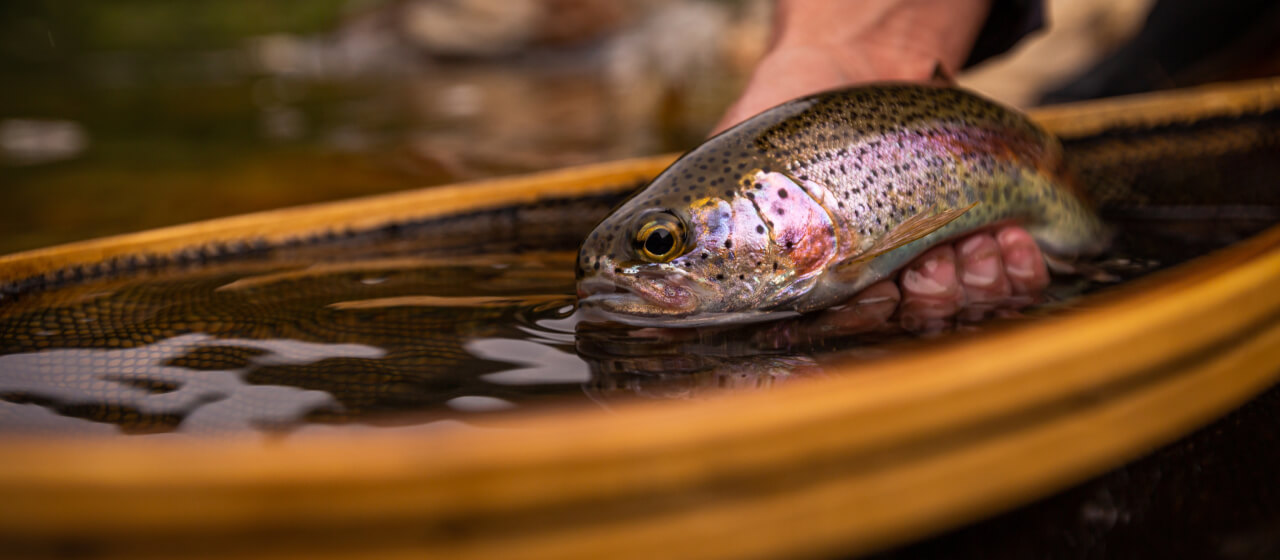
You're standing at the edge of a tranquil mountain stream with your fishing rod in hand. Watching the beautiful rainbow trout that call this stream home swim through the water, you feel the prickle of excitement just thinking about catching one!
In this guide, our fishing experts share which are the best rainbow trout lures and baits to use and dish about their best seasonal tips for a successful haul.
Key Takeaways
- What Do Rainbow Trout Eat? — Rainbow trout eat a myriad of insects (both aquatic and terrestrial), baitfish (like minnows), and invertebrate larvae.
- Best Live Bait for Rainbow Trout — When you plan to use live bait, we recommend choosing from minnows, insects, worms, salmon eggs, and grubs. The best artificial baits include kernel corn, trout bites and nibbles, plastic worms, dough bait, and salmon eggs.
- Best Artificial Lures for Rainbow Trout — The most helpful types of artificial lures are spoons, jigs, spinners, and plugs. Inline spinners, spoons, curly tail jigs and grubs, or very small crankbaits are fantastic smaller lures for rainbow trout between 10-12 inches in size.
- What Rainbow Trout Bait to Use by Season — Wild rainbow trout don't usually live in water that ever gets warmer than 70°F. You can typically find them stocked in neighborhood parks and lakes during wintertime.
- Learn About Rainbow Trout Basics — Discover all you need to know about what rainbow trout are, where to find them, and why you should understand the concepts of lake turnover whenever you plan on fishing for them.
What Do Rainbow Trout Eat?
Rainbow trout are not picky eaters! They'll eat several types of aquatic and terrestrial insects, invertebrate larvae, and some bait fish like minnows. Nightcrawlers, grubs, and even dead fish carcasses are often another choice for rainbow trout.
During spawn season, they can lay still with their mouth open to feed on larvae as it flows downstream. Doing so saves energy while still satisfying their hunger.
What Are the Best Rainbow Trout Baits?
Rainbow trout are adaptable game fish that are known for their colorful scales, combative nature, and capacity to swim upstream. They're good to target for both beginner and experienced anglers because they are well-stocked and pretty willing to bite a range of bait.
| Best Rainbow Trout Baits & Lures Guide | ||||
|---|---|---|---|---|
| Bait Name | Time Most Active | Spring / Fall Depth | Summer / Winter Depth | Best Lure To Mimic Bait |
| Minnows | Daytime | Shallow | Shallow | Crankbaits, spinners |
| Insects | Daytime | Shallow | Shallow | Plugs |
| Worms | Night | Shallow | Shallow | Soft plastics |
| Salmon eggs | Daytime | Shallow | Shallow | Dough baits |
| Grubs | Daytime | Shallow | Deep | Spoons |
Using bait and lures that resemble the rainbow trout's natural food source can get you a long way and yield fantastic success! But which ones you choose to use will greatly vary depending on two factors:
- Where you're fishing
- Whether the rainbow trout are wild or stocked
Looking up which natural baitfish and species your chosen waters have can help you trim down the contents of your tackle box! You'll be able to see what types of bait are available and can then get artificial lures that mimic them and attract your next prize.
Popular bait choices for rainbow trouts include:
- Powerbait Trout Nuggets (especially for hatchery fish)
- Minnows
- Worms and nightcrawlers
- Live nymphs and minnows (best used in winter)
- Kernel corn and colored marshmallows (for hatchery fish)
- Salmon eggs
- Grubs
- Terrestrial and aquatic insects
What Are the Best Rainbow Trout Artificial Lures?
Although many anglers prefer using live bait, artificial lures can also be helpful for targeting rainbow trout. Here are the lures we recommend for anglers looking to catch some rainbow trout:
Best Minnow Crankbait for Rainbow Trout
Crankbaits wobble and mimic the movement of minnows and large insects, which are a natural food source for rainbow trout. They entice reaction strikes from any nearby rainbow trout and are easier to cast than other types of artificial lures.
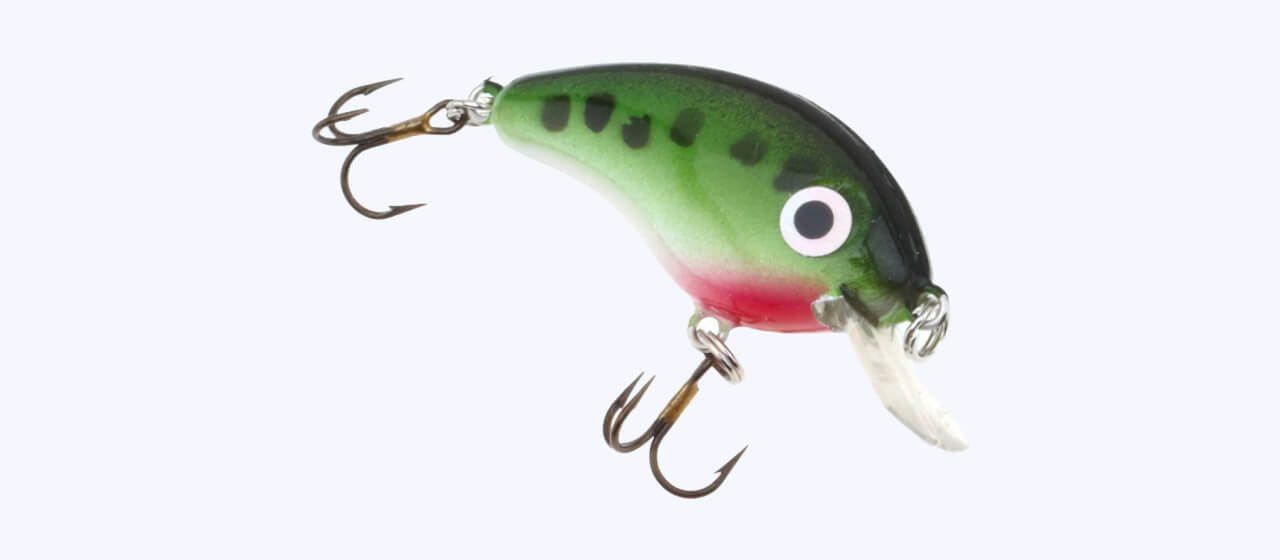
Why We Chose It: Crankbaits are great for targeting larger trout and mimicking the baitfish larger trout are after.
How to Use This: Cast out and reel quickly to get it down to the right depth. Then work it back with a pause and reel pattern while adding sharp twitches.
Key Features:
- Reflective eyes look great underwater
- Double treble hooks for easy hookups
- Lifelike injured baitfish action
Best In-Line Spinner for Rainbow Trout
Spinners are trusted, versatile lures for catching rainbow trout. You'll find them in a range of sizes and colors. Their flash and vibration help attract rainbow trout (especially in moving waters like streams and rivers). Spinners are also simple to use and cast.
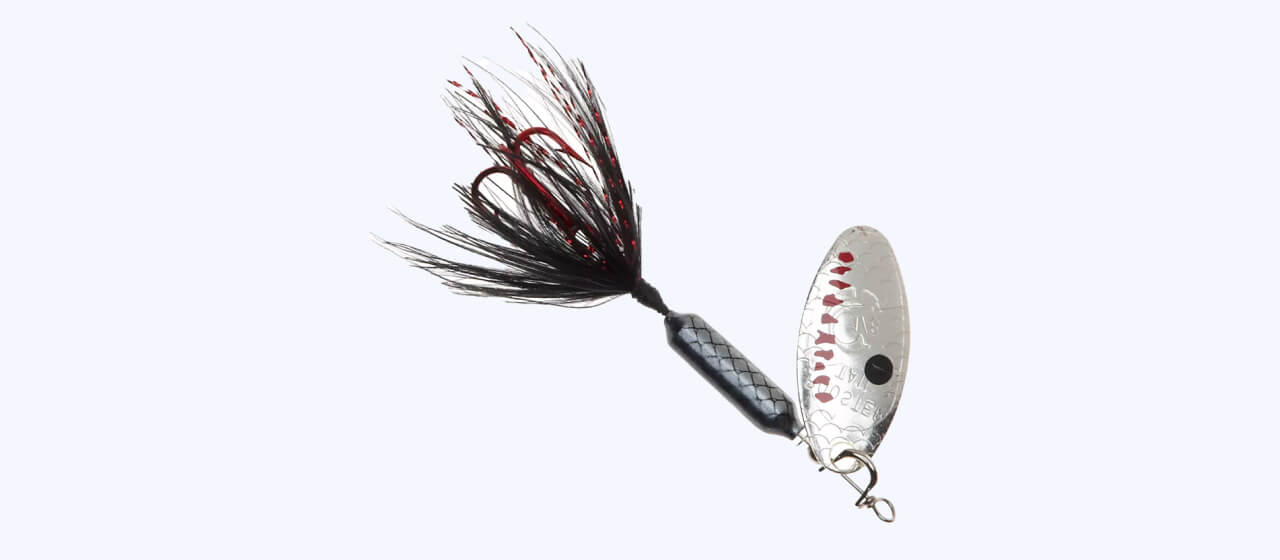
Why We Chose It: Spinners are probably the most popular lure type for rainbow trout as they can look like both a minnow and an insect, which are both on the trout's menu.
How to Use This: Cast out and allow it to fall a bit. Then work it back VERY slowly with a combination of light twitches and slow reeling - just enough to get the blade moving. If fishing fast-moving water, you can also simply let it drift while retrieving slowly.
Key Features:
- Available with either gold or silver blades
- Gold is good for cloudy days, silver for sunnier days
- Dressed red treble hook for easy hookups
Best Spoon for Rainbow Trout
Spoons have been used for a long time because of their simplicity and efficacy! They are easy to use and have proven success in attracting rainbow trout in both moving and still waters. They also have a heavy flash and vibration. Spoons are great for when you want to cast longer distances.
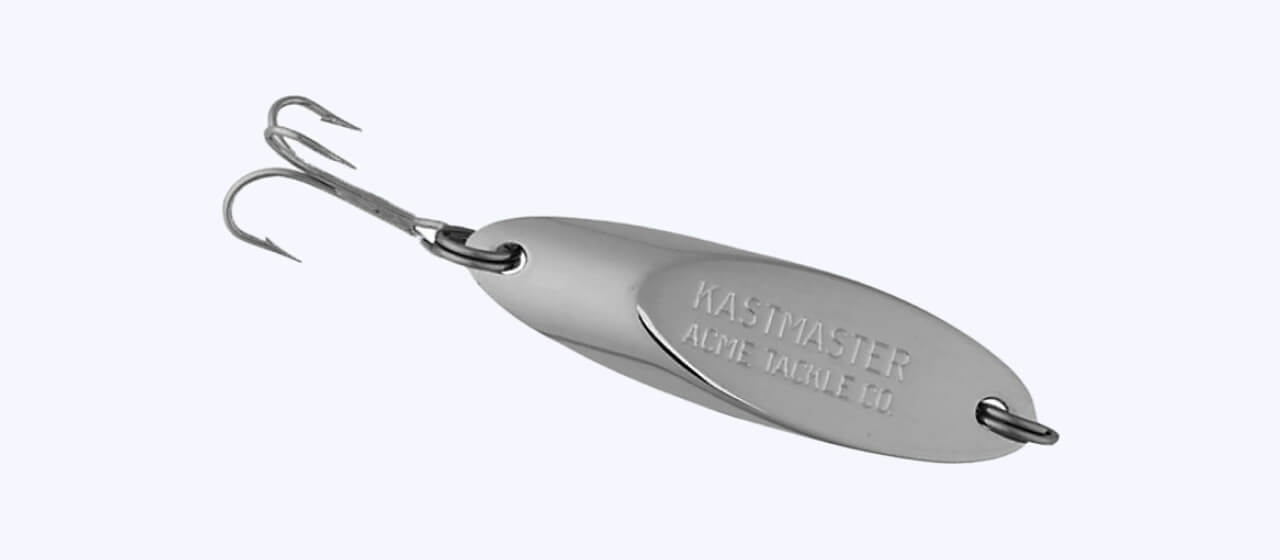
Why We Chose It: Spoons are some of the most versatile lures available, and a huge variety of fish will strike them. Spoons are especially effective at reaching the drop-offs and ledges that trout love to hunker down near.
How to Use This: When fishing streams, cast out and try to target drop-offs and ledges while slowly retrieving with light jerks and pauses. They can also be fished vertically in lakes by lifting them high with your rod tip and letting them fall slowly back down. If all else fails, use a slow, steady retrieve.
Key Features:
- Dense and heavy design casts far and falls fast
- Silver and gold colors provide lots of flashes and can call in trout from far away
Best Jerk Bait for Rainbow Trout
Many fishermen don't consider jigs for trout fishing, but they can be useful for targeting large or trophy trout. This is because jerk baits mimic fish and crustaceans that larger trout like to eat. They are versatile and can be used in streams, rivers, and lakes.
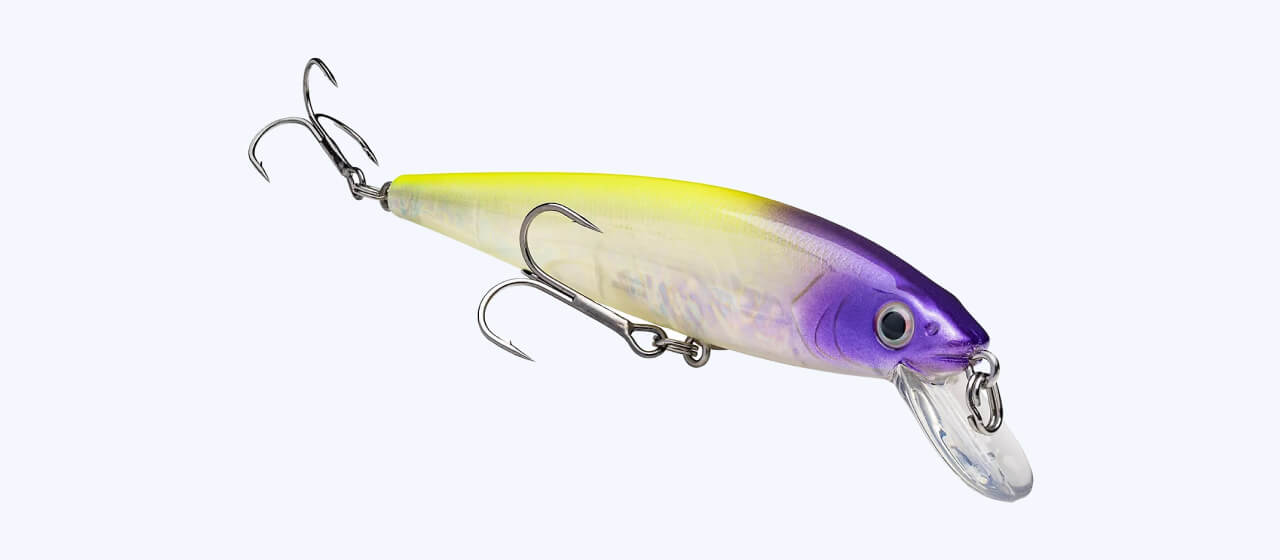
Why We Chose It: Great for mimicking injured and dying baitfish, slash baits will generally catch larger trout looking for more substantial meals.
How to Use This: Best used around creek and stream inlets, cast it out and retrieve with quick jerks of the rod tip. They can also be reeled and paused to wiggle, roll, and flash.
Key Features:
- Weight transfer system allows anglers to cast it farther
- Realistic 3-D eyes
- Double treble hooks for easy snags
Best Soft Plastic for Rainbow Trout
Soft plastic lures mimic the natural food sources of rainbow trout, such as grubs, worms, and small fish, which helps attract their attention. They are very versatile and can be presented in a variety of ways, depending on the season and the depth of the fish.
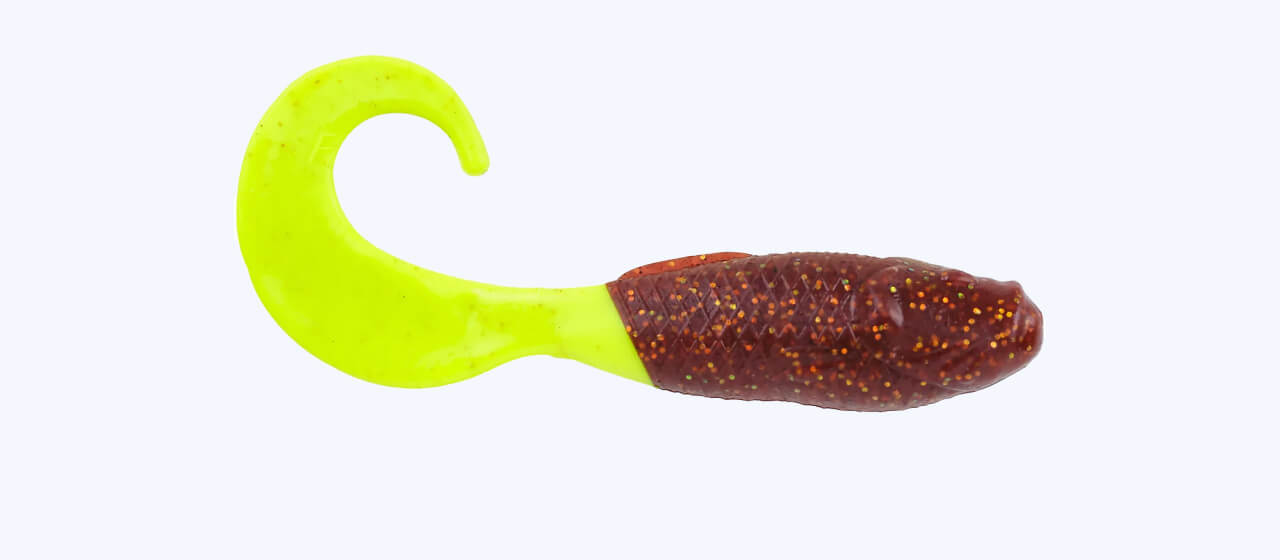
Why We Chose It: An excellent and versatile lure, this can be paired with a jig head or simply rigged up with a hook for an ultra-light presentation. The tail action and silhouette are fantastic for mimicking the small minnows that trout love.
How to Use This: When paired with a jig head, you can bounce it off the bottom with quick jerks of the rod tip. Rigged straight on a hook it can be swum or simply drifted on the current.
Key Features:
- Erratic swimming action is simulated through the tail
- Relatively cheap and easy to use
- Can be used in saltwater for other species as well
Best Attractant for Rainbow Trout
A fishing attractant is a type of artificial lure that emits a scent that is appetizing to fish to bring them toward the lure. The natural scent registers as food to the fish and makes them swim toward the smell, bite it, and hang on.
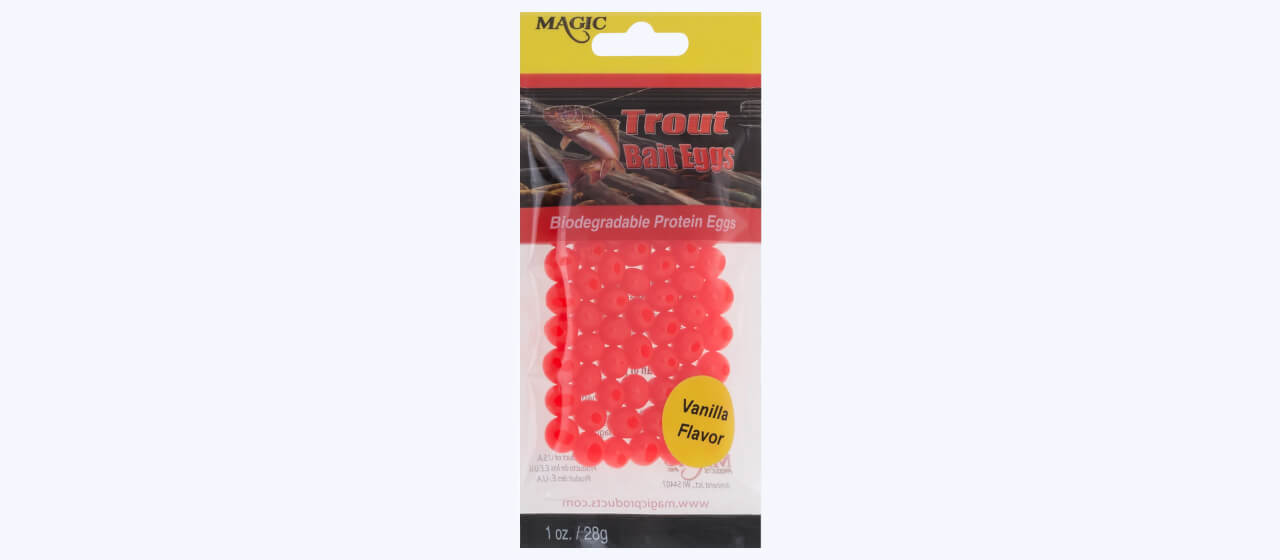
Why We Chose It: One of the simplest and easiest baits to use for trout fishing, they simulate the eggs that are always on trout's menus perfectly.
How to Use This: Simply rig two to three eggs on a hook below a 1- to 2-foot leader and casting weight. Cast out, let it sink to the bottom, reel in to keep the line tight, and watch for a bite. You can also rig them directly on a hook with no weight and let them drift downstream if you're on a river or stream.
Key Features:
- Anise flavor helps attract trout
- Completely biodegradable design
- Fantastic tactic for children and beginners
Best Rainbow Trout Bait & Lures for Every Season
| Best Rainbow Trout Baits & Lures Guide | ||||
|---|---|---|---|---|
| Season | Best Months To Fish | Best Water Temperature | Time of Day Most Active | Best Bait To Use |
| Spring | April and May | Between 34-67°F | Sunrise and sunset | Weighted spinners |
| Summer | Not ideal | 68°F or cooler | Early morning | Worms |
| Fall | October and November | Between 34-67°F | Sunrise and sunset | Crankbaits |
| Winter | December and January | Above 34°F | Daytime | Flies |
Don't be afraid to try something new out every once in a while! You can use different techniques in different seasons to see which ones work for you and your fishing strategy:
- In winter, many anglers prefer to fly fish for rainbow trout using flies
- Crankbaits that mimic minnows are a great choice to catch a rainbow trout's attention in the fall.
- During springtime, weighted spinners can be retrieved at a slow pace to imitate the motion of the current.
Ideal Rainbow Trout Seasonal Fishing Water Temperatures
Rainbow trout can adapt to many different environments — lakes, streams, and even rivers. But they are very sensitive to water temperature and the different seasons. These factors affect their behavior.
Anglers can, however, learn how to catch them in every season equipped with the right knowledge:
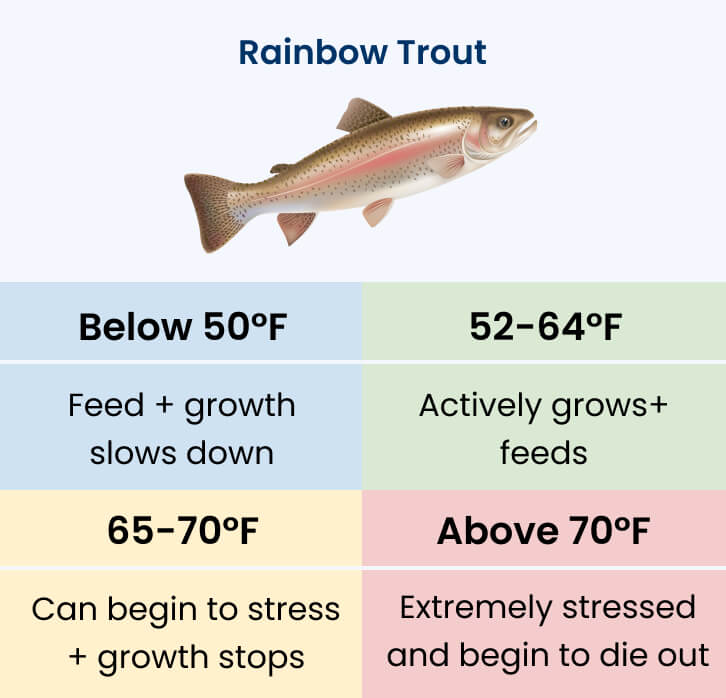
- Below 50°F — Unlike other types of trout, you'll find Rainbow Trout in shallow water (usually 4-10 ft) in these temperatures.
- 52-64°F — Rainbow Trout actively feed, hunt, and grow in this water temperature range.
- 65-67°F — Rainbow Trout begin to stress in these water temperatures. Their growth also slows down or stops completely.
- Above 67°F — Rainbow trout get extremely stressed and begin to die out when the water is too warm (usually at or above 70°F).
Frequently Asked Questions

Rainbow trout are large fish that are members of the Salmonid family. They typically have a torpedo shape, blue-green back, silver belly, and pink stripe down the sides of the body. They may also have black spots on the body and fins.
Rainbow trout are stocked in hatcheries and have been introduced from the west coast to nearly every state in the U.S. and places around the world.
You'll find rainbow trout in freshwater rivers, lakes, streams, and ponds. They're also stocked in many fish hatcheries around the nation.
- In moving waters, rainbow trout frequent structures to rest from the currents.
- In still waters, rainbow trout will be found near cover — a rock pile, dock, brush pile, etc.
If you're fishing for trout in a lake, understanding seasonal lake turnover patterns can help you decide the best area(s) to fish from and the best time to go.
- In the springtime, the surface of the water warms up, but the bottom stays colder so you should fish deeper.
- In the summer, the rising temperature of the water will cause many rainbow trout to stop eating and breeding. When it gets too warm, they eventually begin to die off (except for cooler spring-fed rivers or mountain streams).
- In fall, the surface of the water will cool down to match the bottom temperature and you should fish closer to the surface.
- In winter, anglers should target fish near the surface or a few feet below the ice.
Have Fun Out There!
Ready to get out there and catch some rainbow trout? Head in-store or online at Academy.com to browse our fishing shop for all the lures you'll need.
Call up your buddies, and plan your next trip! Browse our other articles to learn more valuable tips that can help you have a successful fishing season:
- Looking to catch a prized hawg? Learn all about the best baits and lures for bass!
- Want to brush up on walleyes? Use these best baits and lures before you head out.
- Excited for a tasty challenge? Catch your next catfish with these best baits and lures.
- Bring home the biggest red drum of the day! Use these best baits and lures for redfish.
- Reel in a nice speckled fish. Catch your next crappie with these baits and lures.
- Cast out the right tackle for your next striper. Learn all about the best striped bass baits and lures.
- Looking to stock your lake trout tackle box? You can’t miss these best baits and lures.


